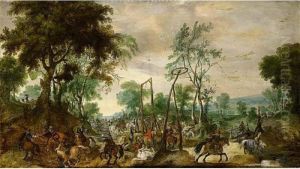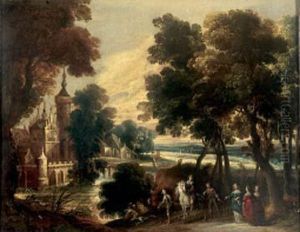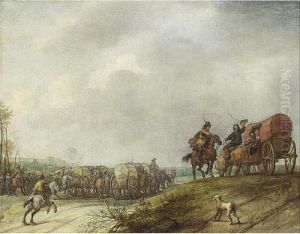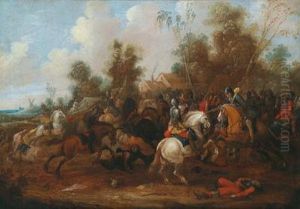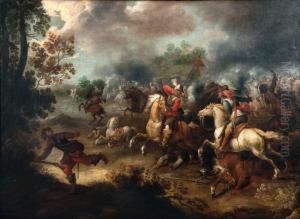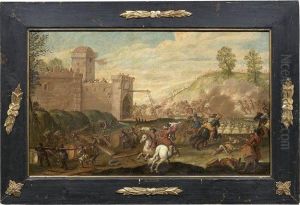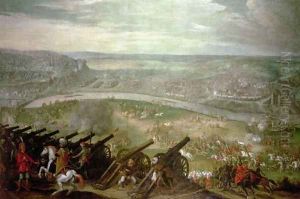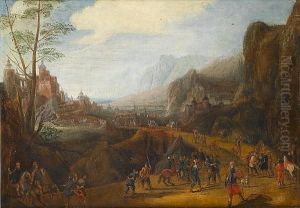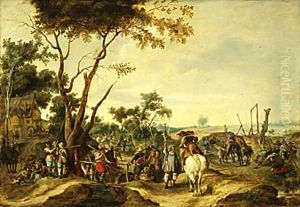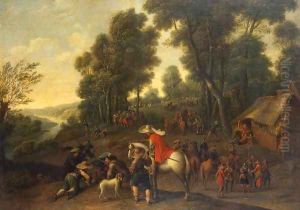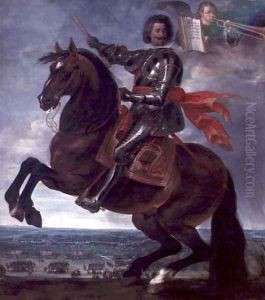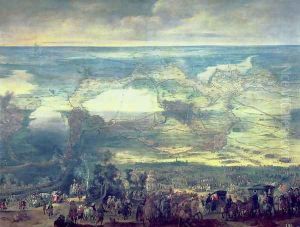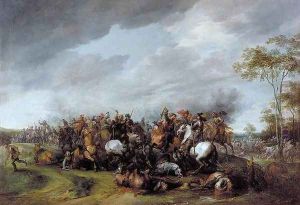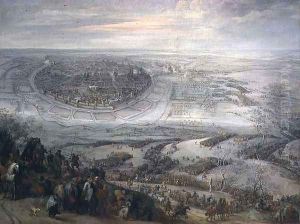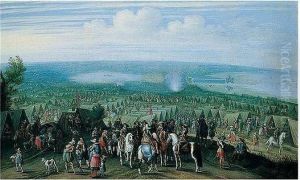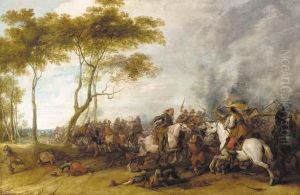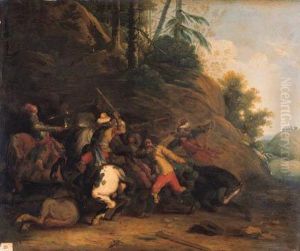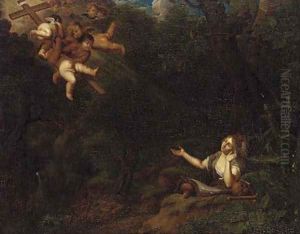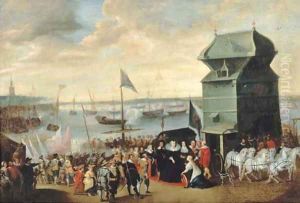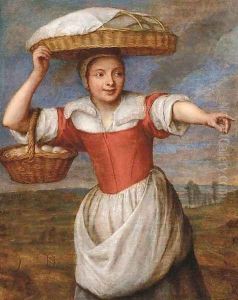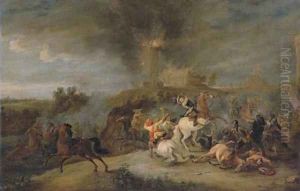Pieter Snayers Paintings
Pieter Snayers was a Flemish Baroque painter known primarily for his large-scale battle scenes and landscapes. Born in Antwerp in 1592, Snayers developed his skills in the early 17th century, a period when the Southern Netherlands (present-day Belgium) was a major center for art and culture under Spanish rule.
Snayers became a master in the Antwerp Guild of Saint Luke in 1612 and worked in the city until around 1620. His career flourished when he moved to Brussels, where he became court painter to the Archduke Albert and his successor, the Spanish governors. He gained a reputation for his dynamic battle scenes, which were sought after by nobility and military leaders who desired to commemorate their victories or display their martial prowess.
His paintings are characterized by meticulous attention to detail, vibrant colors, and the ability to capture the chaos and movement of battle. Snayers was particularly adept at rendering the varied landscapes of the battlefields, from the rolling hills to the dense forests, which provided a dramatic backdrop to the human drama. His works often included numerous figures, horses, and canons, demonstrating his ability to create complex compositions that were both realistic and engaging.
Over the course of his career, Snayers produced a significant number of paintings, many of which depicted specific historical battles and sieges that occurred during the Eighty Years' War and the Thirty Years' War. His works served as a visual record of these events and were instrumental in shaping the way they were remembered by future generations.
Pieter Snayers also influenced other artists of his time and was involved in the training of several pupils. His legacy is preserved in various European art collections, including those of museums in Austria, Spain, and his native Belgium. He died in Brussels in 1667, leaving behind a body of work that continues to be studied and admired for its historical significance and artistic merit.







